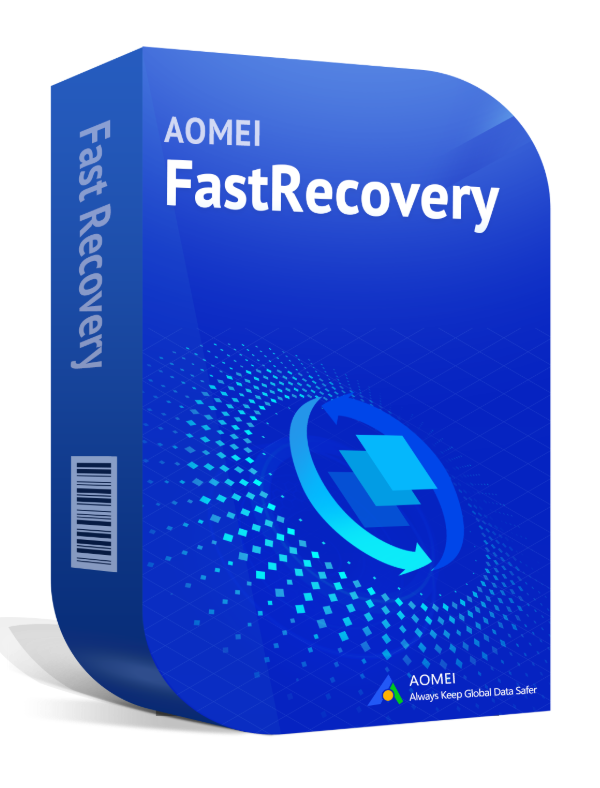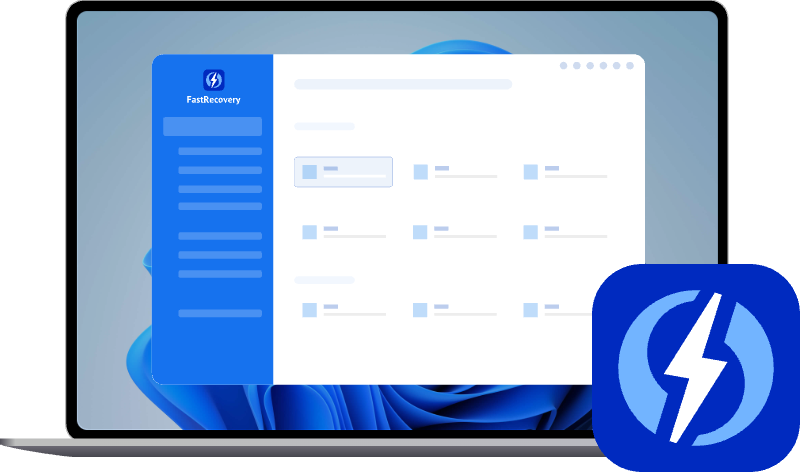Files Copied to USB Drive Disappear? Recover Now (5 Free Ways)
Files copied to USB drive disappeared? Get the possible reasons and 5 free & effective methods to recover now! Scroll down to learn more and the steps.
Known as flash drives, USB sticks, pen drives, and thumb drives, USB drives have been widely used among users because of their tiny size and large storage capacity. As a portable device, it renders a better user experience in saving and transferring data.
But some users report that files/folders disappeared from flash drives? What are the possible causes behind missing files? How to fix and recover files copied to usb drive disappeared effectively? If you have such a question, scroll down to learn more.
Why do copied files disappear from USB?
“I moved some photos, movies, and Word documents to a pen drive. And they were in separate folders. A few days later, when I opened the pen drive, they were only the folders but they were empty. All the photos, movies, and the content of the Word file were gone. Please tell me the way to recover my copied data. Thanks." -A user from Microsoft
Losing files from USB flash drive, especially family memories, work files, etc., is a frustrating thing. You must want to recover files disappeared from flash drive right now. Don't rush, take a deep breath, and calm down first.
Identifying the possible causes is important to find the lost files, which in a way determines the recovery method. It's also related to the recovery rate. Here are some common reasons:
- Hidden files
- Accidental/intentional deletion
- Bad sectors
- Damage file systems
- Virus infection
How to recover files disappeared from flash drives
Your files copied to USB drive disappeared! For a better data recovery rate, you’d better figure out whether the disappeared files are hidden or deleted first. Always use Solution 1 in the following.
Solution 1. Recover hidden files from USB using Command Prompt (First try)
In computing, the attrib command can change the file attributes (read-only, hidden, system, and archive) of files/folders, which requires you to perform in the Command Prompt. So, let's recover hidden files from USB using CMD and see if your files are recovered.
Step 1. Connect the USB to your PC. Then type “cmd” in the search bar, and select the “Run as administrator” option to open the command prompt window.
Step 2. Copy “attrib –h –r –s /s /d G:\*.*” in the window and hit “Enter” to start the process. Please replace the letter G with the real drive letter of your USB.
Step 3. After the process, you can open your USB drive. Then, you’ll find there’s a new folder that includes your needed files. You can change their format and save them in another place.
However, if the attrib command fails to work, which implies your disappeared files are likely in a deletion state. Then, you can refer to other methods in the following.
Solution 2. Recover deleted files from flash drives via AOMEI FastRecovery (Newbie Friendly)
AOMEI FastRecovery is powerful and user-friendly data recovery software in Windows 7, 8, 10, 11, etc., and Windows Servers. With it, you can recover deleted files from flash drives easily and quickly. You don't need to learn any commands and parameters.

- Intelligent use of Quick Scan (within 3-5s) and Deep Scan to scan and recover files in different scenarios.
- Recover images (JPG, PNG, DNG, TIFF, etc.), videos (MP4, MOV, AVI, etc.), documents, compressed files, etc., over 1000 data formats.
- Search or filter files quickly through name, extension, data types, etc.
- Preview files before recovery.
- Support different brands of USB sticks, such as SanDisk, Samsung, Kingston, and Transcend.
- Deal with various data loss scenarios, e.g., accidental deletion, disk formatting, virus attacks, or system crashes.
The following steps depict how to recover deleted files from USB drives!
Step 2. Download, install, and run AOMEI FastRecovery on your Windows > hover the mouse over your connected USB stick on the Hard Drive Recovery section > click Scan.
Step 2. By default, it will run Quick Scan automatically, taking only 3-5 seconds, and allows you to filter files quickly through name, data type, size, etc.
- Name: Enter the relevant filename of your needed files to quickly locate them.
- Data type: Click the Filter button to specify data types, e.g., documents, images, videos, etc.
- Size: Set the file size (<128KB, 128KB~1MB, 1MB~512MB, etc.) in the Filter option.
Step 3. Select the files you intend to retrieve > click Recover x files. If you are not sure, select the file and click the Preview option to check it. Or directly double-click the files to preview.
-
Please select a new location to save the recovered files as restoring to original location may overwrite disappeared files.
-
Click the Deep Scan button to scan your drive more thoroughly if you can't find files disappeared from flash drive.
Free download AOMEI FastRecovery if your files disappeared on a USB drive!
Solution 3. Recover deleted files using Windows File Recovery (for Technicians)
If your USB flash drive files disappeared, Windows File Recovery seems like the ideal software for you to recover lost files from it. But in practice, this data recovery tool relies on the command line to interact with users. In other words, you need to recover deleted files using CMD.
-
Windows File Recovery is only compatible with Windows 10 and above.
-
You can use it to recover lost Word documents, Excel, PPT, PDF, ZIP, JPG, JPEG, etc.
-
The basic command line: winfr source-drive: destination-drive: [/mode] [/switches].
-
Ensure the source drive (where to store the disappeared files) is different from the destination drive (where to save the recovered files).
-
Support 4 recovery modes (Extensive, Regular, Segment, and Signature) and 4 file systems (NTFS, FAT, exFAT, and ReFS).
Step 1. Check the file system of your source drive (flash drive). Connect USB to your PC, and click “This PC” > right-click on the USB > “Properties.”
Step 2. Select a recommended mode after checking the file system of your USB drive and data loss scenarios.
|
File system |
Scenarios |
mode |
|
NTFS |
Deleted recently |
Regular |
|
NTFS |
Deleted for a while |
Extensive |
|
NTFS |
Formatted disk |
Extensive |
|
NTFS |
corrupted disk |
Extensive |
|
FATandexFAT |
Any |
Extensive |
Step 3. Select some common switches you want from the following form.
|
Switch |
Description |
Supported modes |
|
/y: |
Recover specific extension groups, comma-separated |
Signature |
|
/p: |
Saves a log file of the recovery operation in a different location than the default location on the recovery drive (for example, D:\logfile). |
All |
|
/a |
Overrides user prompts, which is useful in a script file. |
All |
|
/u |
Recovers undeleted files, for example, from the Recycle Bin. |
NTFS Segment |
|
/k |
Recovers system files. |
NTFS Segment |
|
/g |
Recovers files without primary data streams. |
NTFS Segment |
|
/e |
To keep your results manageable and focus on user files, some file types are filtered by default, but this switch removes that filter. |
NTFS Segment |
|
/e: |
Specifies which file types are filtered. |
NTFS Segment |
Step 4. Download Windows File Recovery from the Microsoft Store by clicking the “Get” button, then install and open it on your PC.
Step 5. Type the following command to recover recently deleted PDF files from pen drive (assume the drive letter is “F”) toD drive.
winfr F: D: /regular /n*.pdf
Please type the adjusted command line in the window, and press “y” to go on. If you want to stop the thumb drive data recovery process, please press the “Ctrl + C” keys.
Solution 4. Scan USB drive for viruses or malware
If you still can't find deleted files, it's likely that your files are infected by viruses or malware. You can try Microsoft's antivirus software, Windows Defender, to fully scan your USB drive.
Step 1. Search for Windows Security in the search bar and open it. Then, click Virus and threat protection.
Step 2. Click Scan Options.
Step 3. Scroll down to select Full Scan and click Scan Now.
Solution 5. Format USB drive to fix files disappeared error (Last resort)
It seems unbelievable, but it does fix the "files copied to USB drive disappear" issues effectively, as damaged or incompatible file systems can cause this error.
Step 1. In File Explorer, find your USB drive. Then, right-click on it and select the Format... option.
Step 2. Be sure the "Quick Format" is checked. Select a compatible file system (e.g., NTFS) and click “OK”.
Windows will perform a Quick Format by default, which only deletes files but does not overwrite them. If you uncheck this option, it will perform a Full Format, which will delete and overwrite files on the USB drive. Please learn more: Quick Format vs Full Format before deciding.
Wrapping up
How to fix the issue of files copied to USB drive disappeared? This post shares 5 free and efficient ways with you. To recover deleted files from USB drives, there’s no better way than utilizing a data recovery tool with a GUI. At this point, AOMEI FastRecovery is your top choice.
More importantly, you need to make backups regularly using Windows features or free backup software like AOMEI Backupper Standard because backups are the best hedge against data loss.

